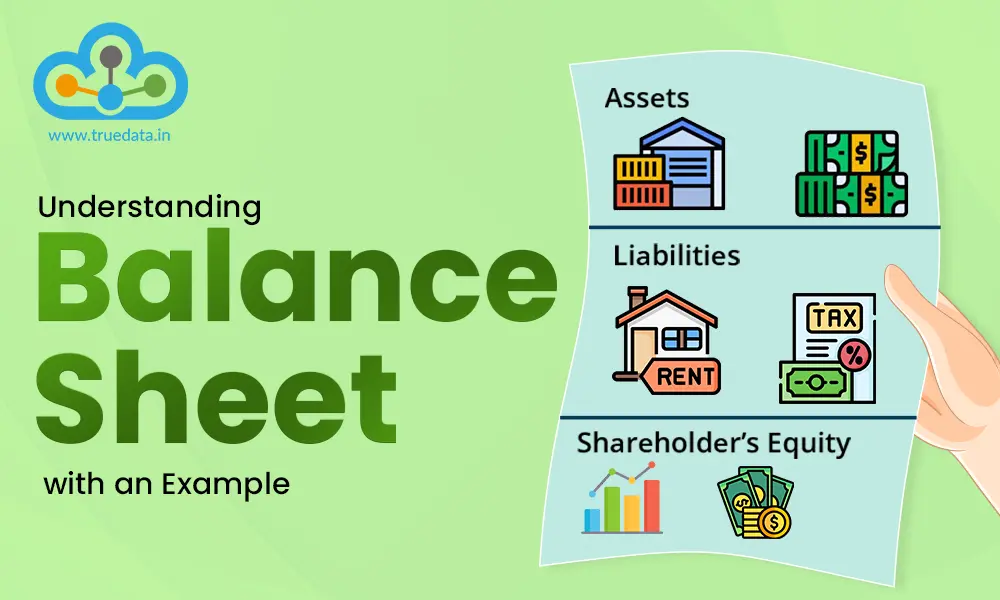
We have seen the basics of the balance sheet and how to read it in our earlier blogs, including the study of balance sheet assets and liabilities in detail. However, studying a fundamental financial concept in theory and using that knowledge for practical purposes are two different things. Here in this blog, we will attempt to use our understanding of the balance sheet to decode the actual data of a company and draw useful insights for various stakeholders. Read on to know more and enhance your financial knowledge.
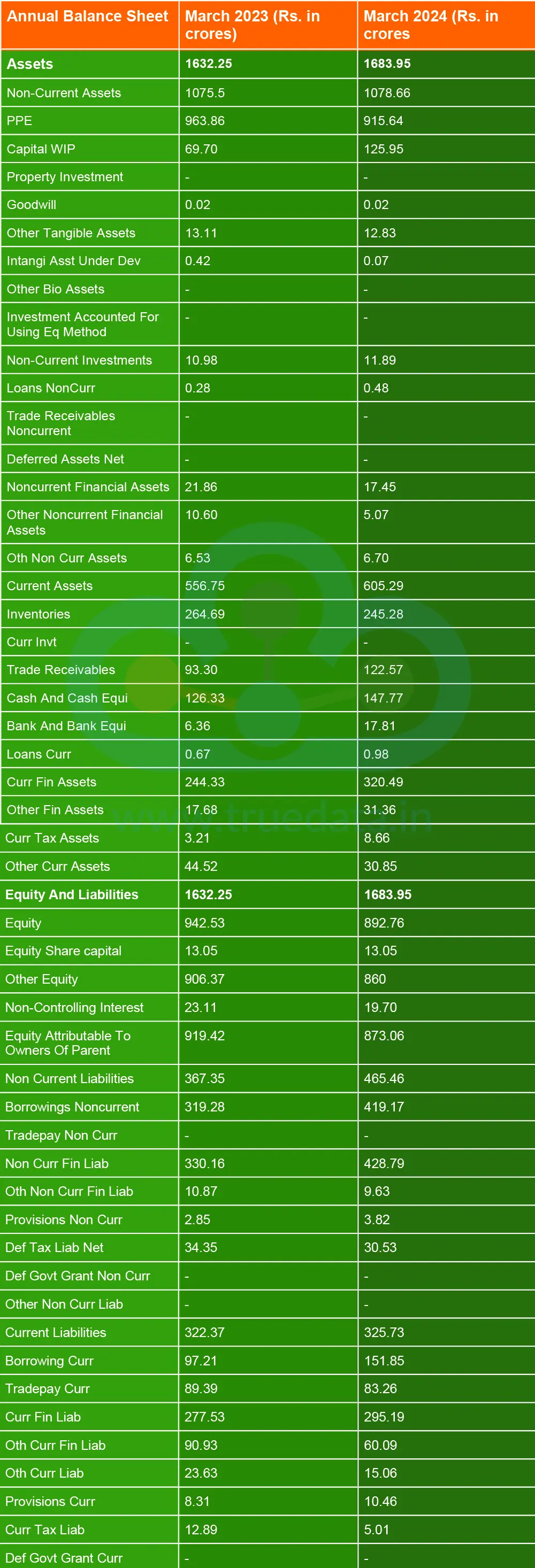

Overall assets grew slightly (+3.17%).
An increase in Capital Work-in-Progress suggests ongoing investment.
A drop in Property, Plant & Equipment may indicate depreciation or asset sales.
Cash and receivables have improved, which is a good sign for liquidity.
An increase in long-term borrowings suggests new loans or bonds have been raised to finance long-term projects.
Lower deferred tax liability could be due to accounting/tax adjustments.
Short-term debt has spiked, which can be a possible sign of working capital stress.
Other liabilities (taxes, provisions) reduced.
Slight decline in equity (likely due to lower profits, dividend payout, or FX loss).
A reduction in non-controlling interest signals less minority ownership value.
One of the crucial steps in fundamental analysis of a balance sheet is the ratio analysis. Here is a brief snapshot and the insights drawn from the same.
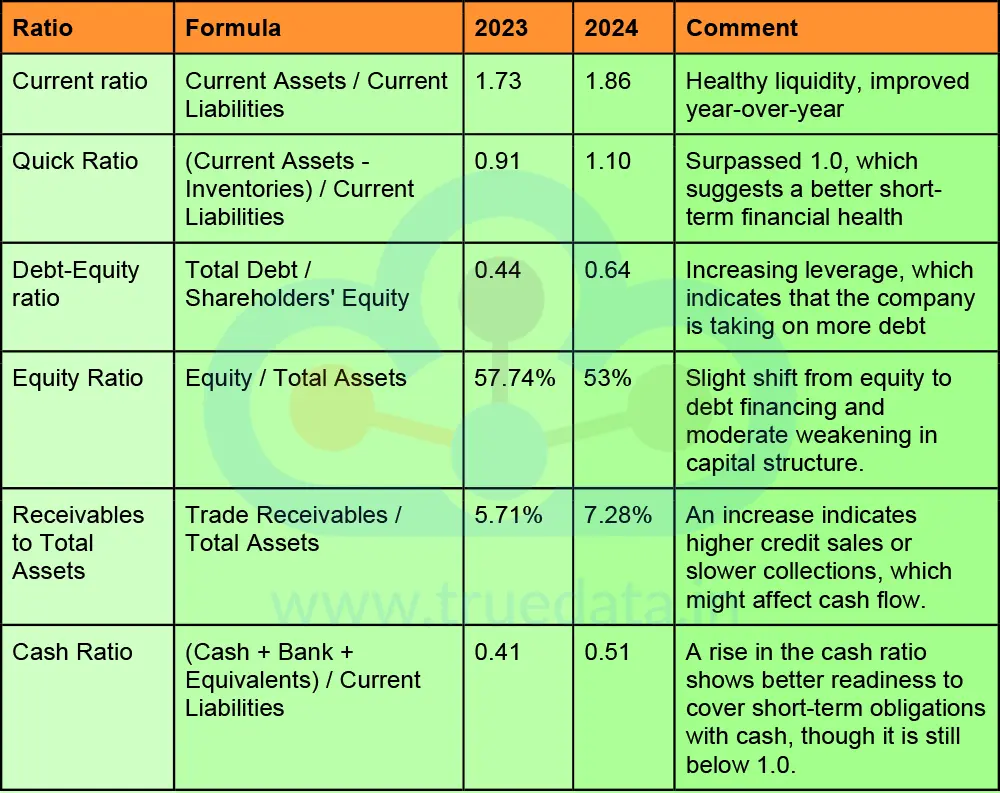
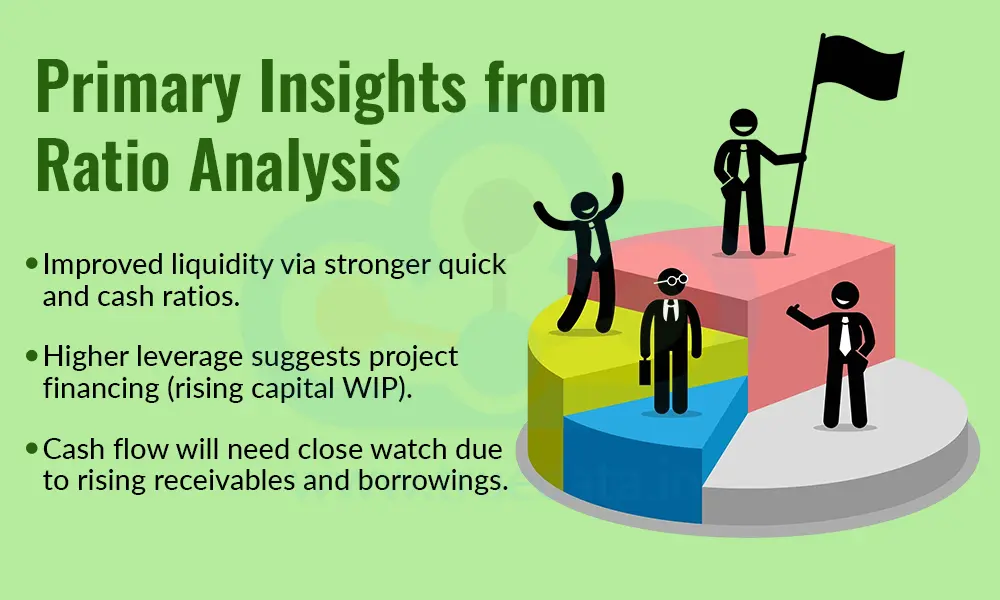
Liquidity has improved, especially through better quick and cash ratios.
However, the company is becoming more leveraged, likely financing new projects (as seen from rising capital WIP).
Cash flow management will be important in the coming periods, especially with higher trade receivables and borrowings.
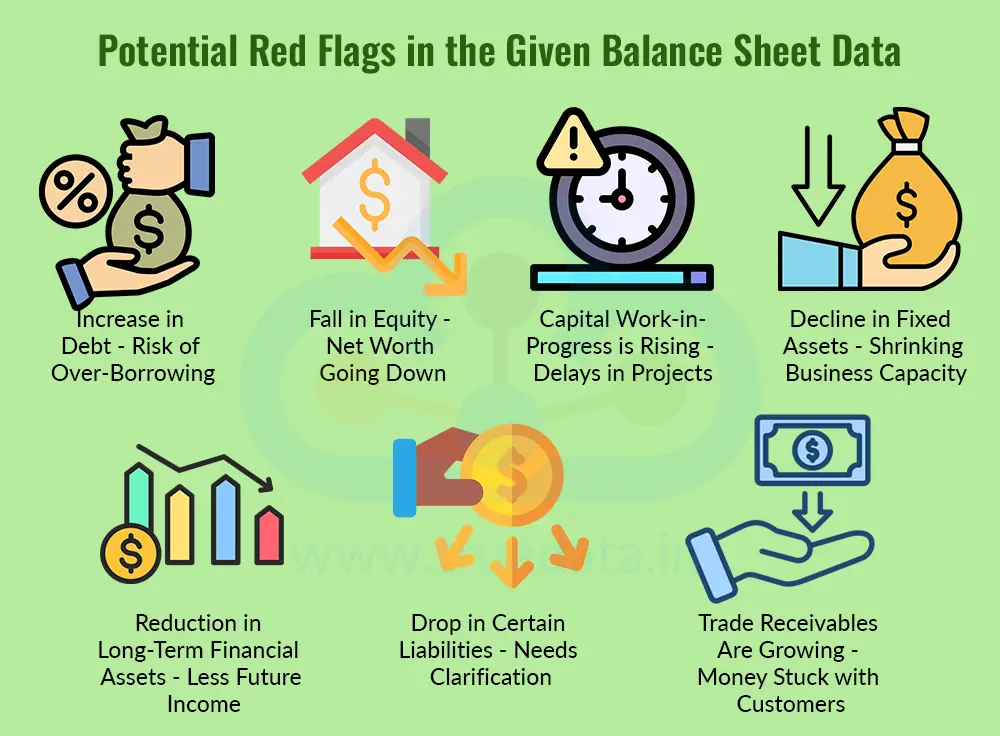
Analysing a balance sheet requires comparing the data to the previous metrics or to its peers and deriving results from the same. This can lead to uncovering a few potential red flags that may not necessarily translate into failure or damage the reputation of the business, but do warrant further analysis of the data and the financial statements of the company as a whole.
Some of the potential red flags that may be highlighted from the given balance sheet data are explained below.
In the past year, the company has taken on a lot more debt. Long-term borrowings went up by more than 31%, and short-term borrowings jumped by over 56% resulting in the debt-to-equity ratio rising from 0.44 to 0.64. This means the company now depends more on borrowed money to run its business.
Potential red flag -
Higher debt means the company has to pay more interest.
It has less room to borrow more in the future if needed.
If interest rates go up or there’s an economic slowdown, the company could struggle to repay its loans.
The company’s equity (which shows how much the business is worth to its owners) went down by over 5%. This drop could be because of losses in the business, high dividend payouts, or foreign exchange losses. At the same time, the company’s borrowings are going up.
Potential red flag -
A lower equity base with rising debt can make the financial position unstable.
It could be a sign that the company is using up its internal reserves and depending more on outside funding.
Capital Work-in-Progress (CWIP), which refers to money spent on projects that are still not completed, went up by more than 80%.
Potential red flag -
If projects are getting delayed, money is stuck without generating income.
Delays could lead to cost overruns and lower returns.
It may also affect future production or operations if these assets are not completed in time.
The value of Property, Plant & Equipment (PPE), like buildings and machines, dropped from Rs. 963.86 crores to Rs. 915.64 crores.
Potential red flag -
This could mean that the company is not investing enough in maintaining or upgrading its physical assets.
It might be selling off important assets.
Over time, this could reduce the company’s ability to produce goods or provide services.
The company’s non-current financial assets, which include long-term investments, fell significantly from Rs. 10.60 crores to Rs. 5.07 crores.
Potential red flag -
This could mean that the company is using its savings or reserves to manage operations.
A drop in investments could reduce potential future income or safety cushions during hard times.
Other current liabilities and financial liabilities dropped sharply. While a reduction in liabilities may seem good at first, it is important to understand why this happened.
Potential red flag -
If liabilities were paid off, it would be positive.
However, if they were simply removed or reclassified in the books without actually paying money, it could hide financial problems.
Investors need to check the notes in the financial statements to be sure.
Trade receivables, which indicate the money the company is yet to collect from customers, increased by over 31%. These now make up a bigger part of the total assets.
Potential red flag -
This may mean that customers are taking longer to pay.
It can lead to cash flow problems, making it harder to pay suppliers and workers on time.
There is also a higher risk of bad debts if some customers do not pay at all.
These red flags do not necessarily mean the company is in trouble, but they are early warning signs that something might not be right. Thus, it is important for the investors and analysts to take the following actions in order to get a correct interpretation of the given data.
Review the income statement and cash flow statement for signs of poor performance or cash crunch.
Read the management’s comments in the annual report for explanations.
Track how well the company is collecting money, repaying loans, and managing projects.
The company has shown modest asset growth and improved liquidity, but this is overshadowed by increasing debt dependency, a decline in equity, and growing receivables, which can be interpreted as all signs of weakening financial resilience.

The above data indicates that while the asset base grew marginally, it was mostly funded by increased borrowings and not by profits or capital infusion. This can be a potential strategic or financial pressure point.
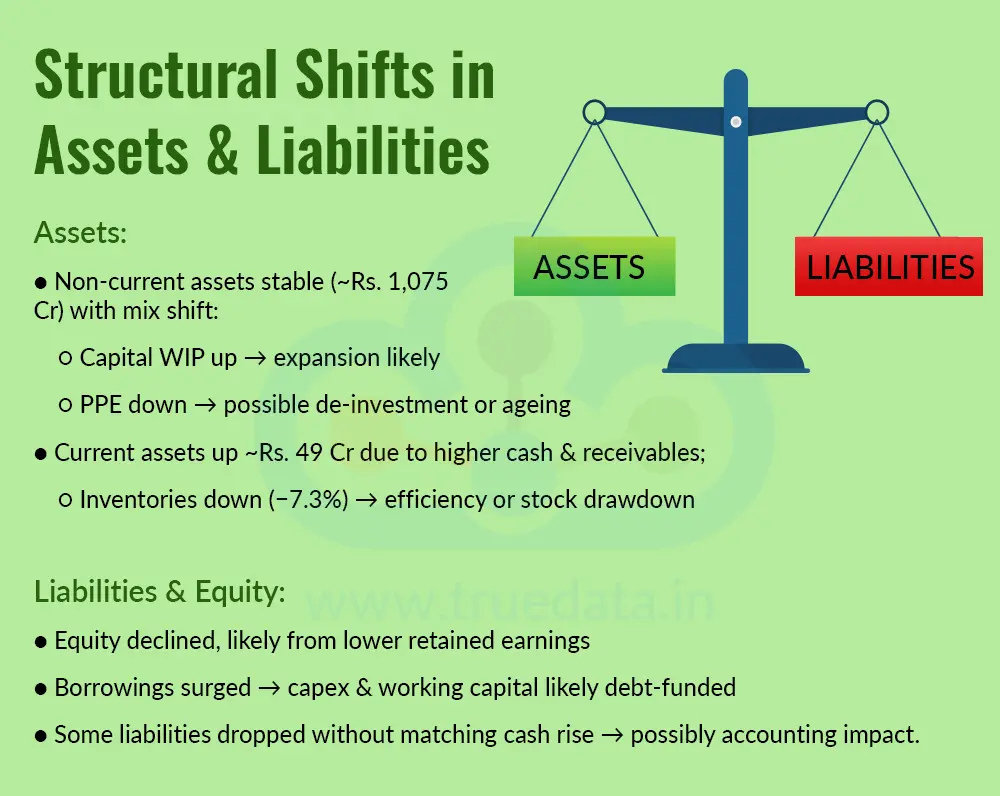
Assets -
Non-current assets remained stable (flat at approximately Rs. 1,075 crore), but the mix changed,
Capital WIP rose significantly, which can be a sign of potential expansion
PPE fell, which could signal de-investment or asset ageing.
Current assets improved by approximately Rs. 49 crore, driven by,
Higher cash & receivables
Inventories fell (−7.3%), which indicates either efficiency or stock drawdown
Liabilities & Equity
Equity dropped possibly due to retained earnings erosion.
Borrowings (long & short-term) rose steeply as working capital and capex are possibly debt-funded.
Some liability heads shrank without corresponding cash increases, which could be accounting-driven.
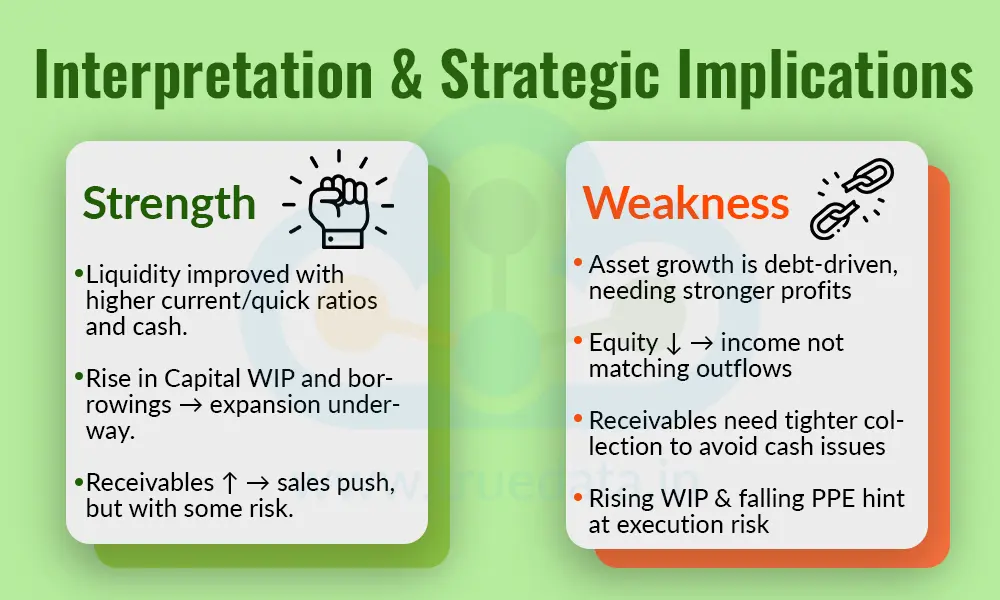
Liquidity position improved, backed by a rise in current and quick ratios and an increase in cash
The company is expanding, as evidenced by the rise in Capital WIP and borrowings, which implies growth projects
Receivables growth indicates a sales push (though with risk).
Debt-driven asset growth, which can be unsustainable without stronger profit generation.
Drop in equity suggests income is not keeping up with outflows.
Receivable management must be managed by tightening collections to avoid a cash crunch.
Potential capital efficiency due to rising WIP and declining PPE may point to execution risks.
The company appears to be in a transition or investment-heavy phase, funding expansion largely through debt. While liquidity metrics are solid, the decline in equity and rise in leverage raise concerns. Without supporting income growth and cash generation, this strategy could strain financial health in the medium term.
The Balance Sheet is the face of the financial statements and is also often the starting point for fundamental analysis of a company. Reading the data given and understanding the nuances of this data can be tricky. However, the key lies in dissecting each section carefully and analysing the data by comparing it to its past figures or those of the industry standards.
This article was an attempt to simplify balance sheet analysis and help readers start their practical journey of fundamental analysis of a company. Let us know your thoughts on this topic or if you need further information on the same, and we will address it soon.
Till then, Happy Reading!
Read More: How to Analyse a Company Competitive Advantage Using Porter’s Five Forces?

Thestock market never stands still, and prices swing constantly with every new h...
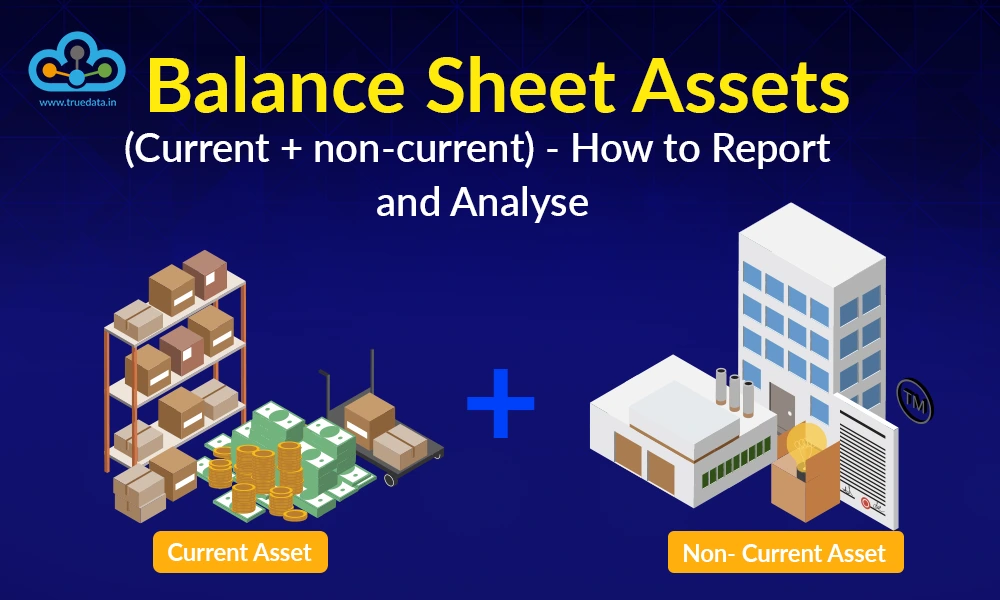
Analysing the financial statements is the first step in the fundamental analysis...
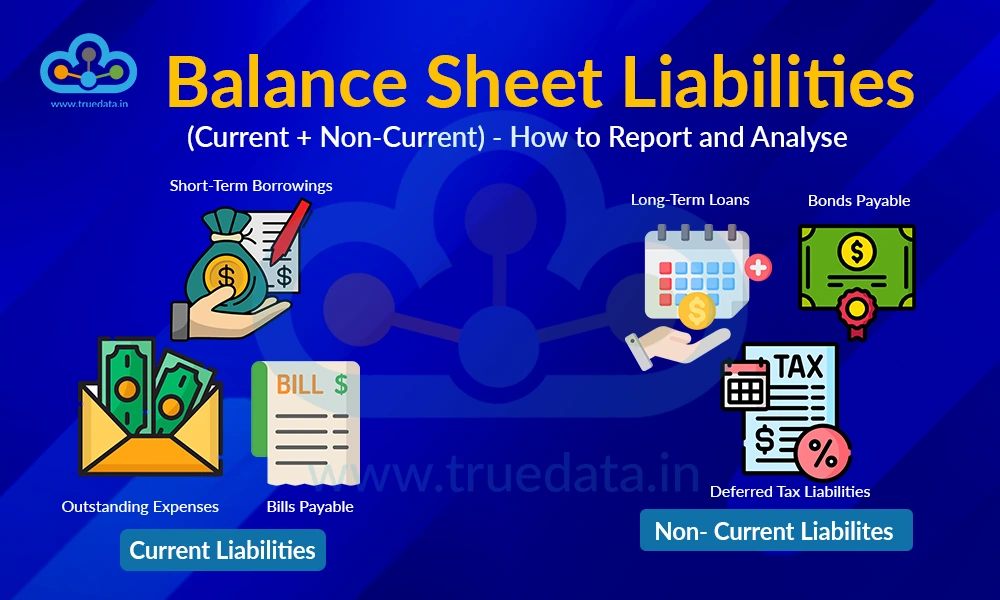
Abalance sheet is built on two pillars, assets and liabilities. We have explored...